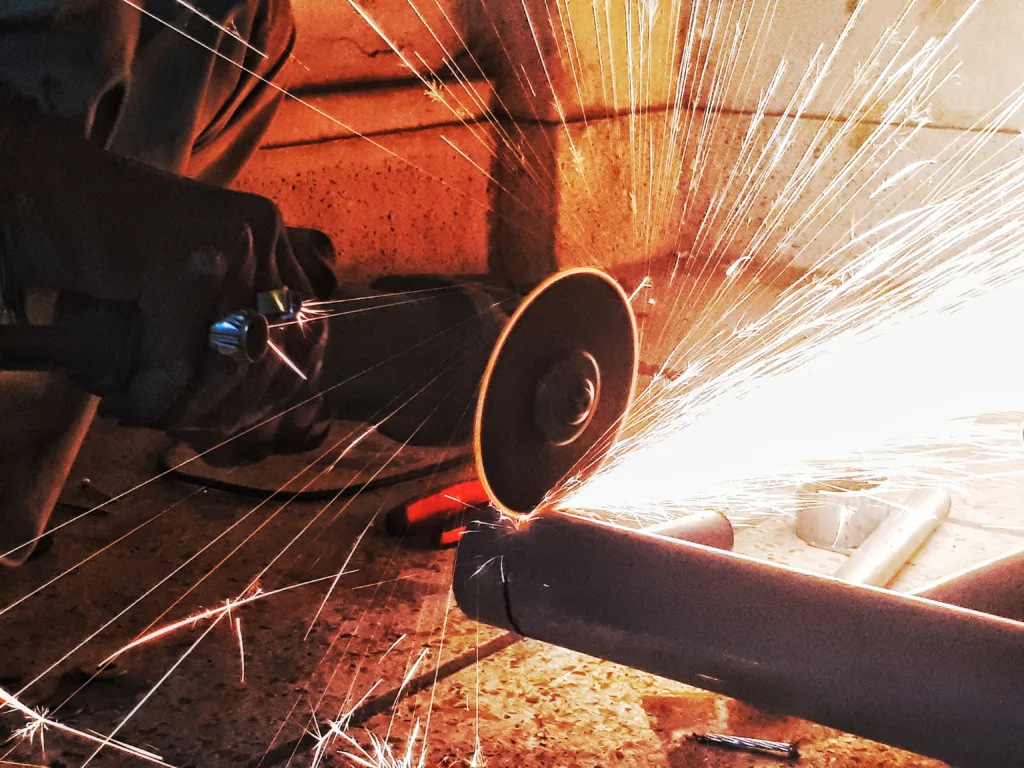Iron is a naturally occurring metal that has been used for thousands of years in various applications, such as tools, weapons, and construction. However, steel, which is an alloy of iron and other elements, has become a more popular material due to its superior strength and durability.
Steel is made by adding carbon to iron, which increases its strength and hardness. The amount of carbon added to the iron determines the type of steel produced. Low carbon steel, for example, has less than 0.3% carbon and is used in applications such as construction and automobiles. High carbon steel, on the other hand, has more than 0.6% carbon and is used in applications such as cutting tools and knives.
One of the main advantages of steel over iron is its strength. Pure iron has a yield strength of around 7250 psi, while steel is nver below 30,000 psi and usually closer to 50,000 psi. This increased strength makes steel a suitable replacement for iron in construction and infrastructure projects that require materials to withstand high stress and pressure.
Steel is also more malleable than iron, meaning it can be easily shaped and molded into various forms. This makes it a versatile material that can be used in a wide range of applications. In addition, steel is less likely to bend or deform over time, making it a more durable and long-lasting option.
Despite its many advantages, iron still has some uses in modern society. It is still used in the production of steel, and it is also used in applications such as cast iron cookware and wrought iron furniture. However, steel has largely replaced iron in many applications due to its superior strength and durability.
Steel is stronger than iron and has become a more popular material due to its many advantages. Its increased strength, malleability, and durability make it a versatile material that can be used in a wide range of applications. While iron still has some uses, steel has largely replaced it in modern society.
Why Steel Is Stronger Than Iron?
Steel is stronger than iron due to its lower carbon content and other alloying elements such as manganese, chromium, and nickel that are added to improve its properties. The lower carbon content in steel reduces the amount of impurities and increases its strength and durability. In addition, steel has a crystalline structure that is more uniform and consistent than iron, prviding a higher level of strength and resistance to deformation. Steel is also more malleable than iron, making it easier to work with and shape into various forms. the combination of lower carbon content and other alloying elements in steel make it a stronger and more versatile material than iron, making it a popular choice for use in construction, infrastructure, and manufacturing industries.

How Much Stronger Is Steel Than Iron?
Steel is significantly stronger than iron. The yield strength of pure iron is around 7250 psi, while steel has a yield strength of at least 30,000 psi and often closer to 50,000 psi. This means that steel can withstand much greater force and pressure than iron without deforming or breaking. It is important to note that iron is still a strong metal and is a crucial component of steel, which is made by adding carbon and other elements to iron to enhance its strength and durability.
Which Is Hardest Steel Or Iron?
Steel is actually harder than pure iron. This is because steel is an alloy consisting of iron and other elements such as carbon, chromium, and nickel. These elements are added to iron to enhance its properties, including hardness and strength. The addition of carbon, for example, can significantly increase the hardness of the steel. On the other hand, pure iron is relatively soft and malleable, making it less suitable for applications that require high strength and hardness. Therefore, when it comes to hardness, steel is the winner over iron.
What Is Stronger Than Steel?
There are several materials that are stronger than steel. Some of the strongest materials include:
1. Graphene: This is a two-dimensional material that is made up of a single layer of carbon atoms. It is 200 times stronger than steel and is also very lightweight.
2. Carbon fiber: This is a material that is made up of thin fibers of carbon. It is five times stronger than steel and is also very lightweight.
3. Tungsten: This is a metal that is known for its strength. It is the strongest natural metal and has a tensile strength of 142,000 psi.
4. Titanium: This is a metal that is known for its strength and durability. It has a tensile strength of 63,000 psi and is also very lightweight.
5. Kevlar: This is a synthetic material that is used in body armor, helmets, and oher protective gear. It is five times stronger than steel and is also very lightweight.
There are many materials that are stronger than steel, each with their own unique properties and uses.

Conclusion
Iron is a strong and essential metal that has played a critical role in human civilization since ancient times. It has been used for weapons, tools, and infrastructure, and is still widely used today in various industries. However, pure iron has limited practical use due to its low strength and malleability. Steel, which is an alloy of iron and oter metals, is much stronger and more durable, making it a better choice for construction, manufacturing, and other applications. Despite its limitations, iron remains a valuable and versatile metal that will continue to play a vital role in our modern world for years to come.
